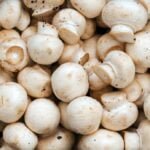What is the best method for inoculating mushroom spores onto a substrate?
Title: Mastering Mushroom Spore Inoculation: The Ultimate Guide to Substrate Inoculation Methods
Introduction (100 words):
Mushroom cultivation is a highly rewarding hobby that requires proper knowledge and techniques for successful spore inoculation onto a substrate. In this comprehensive guide, we will explore the best practices and procedures for achieving optimal results in mushroom spore inoculation. Whether you are a beginner or an experienced cultivator, having a thorough understanding of substrate inoculation methods, mushroom spawn mixing, and the importance of cleanliness and surface sterilization will be crucial in your journey towards growing exquisite mushrooms.
Keyword(s): Mushroom spore inoculation, Substrate inoculation method, Mushroom spawn mixing, Clean hands for inoculation, Surface sterilization for mushroom cultivation
1. Understanding Mushroom Spore Inoculation (250 words):
Mushroom spore inoculation is an essential step in the process of cultivating mushrooms. It involves introducing viable spores onto a suitable substrate, creating an environment conducive to mycelial growth. To ensure successful inoculation, there are several key factors to consider.
Maintaining a clean environment is crucial before beginning inoculation. Wearing latex or tight-fitting rubber gloves and using isopropyl alcohol or diluted bleach for hand and surface sterilization helps minimize the risk of contamination. Proper hygiene practices help create a sterile environment for spore inoculation.
Breaking down the mushroom spawn into small fragments or grain-sized particles before inoculation is recommended. This increases the surface area for mycelium colonization and promotes faster colonization.
Choosing the right substrate is also important. The substrate should provide proper nutrition for the mycelium and support fruiting body development. Common choices include sawdust, straw, wood chips, and coffee grounds. Understanding the nutritional needs of the chosen mushroom species is crucial for selecting the appropriate substrate.
2. Substrate Inoculation Methods (400 words):
There are various substrate inoculation methods available in mushroom cultivation, each with its pros and cons. It is essential to understand these methods to achieve successful results. Let’s explore some of the most popular methods:
a. Point Inoculation Method: This method involves directly injecting spores or spawn into predefined points or holes created within the substrate. By evenly spacing these points, you ensure uniform colonization throughout the substrate. While this method requires precision, it allows for efficient usage of spores or spawn.
b. Spread Inoculation Method: The spread inoculation method involves spreading small fragments of spawn evenly across the surface of the substrate. The spawn can be lightly raked into the substrate to increase contact and subsequent colonization. This method is suitable for large-scale cultivation, as it allows for even distribution of spawn across vast substrate areas.
c. Grain Spawn Mixing Method: Grain spawn mixing involves mixing small broken spawn fragments directly into the substrate material. This ensures thorough distribution of spawn within the substrate, facilitating rapid colonization. Grain spawn mixing is often preferred for specific substrates such as straw or coffee grounds.
d. Liquid Culture Inoculation Method: In this method, spores or spawn are suspended in a liquid culture and then applied to the substrate. The liquid culture is developed using a nutrient-rich broth, providing an ideal environment for the spores or spawn to germinate. This method offers a simplified and efficient way of inoculating substrates, especially for bulk production.
3. Ensuring Clean Hands for Inoculation (300 words):
Maintaining clean hands during the inoculation process is crucial to prevent contamination and ensure the success of your mushroom cultivation. Follow these guidelines for clean hands:
Thoroughly wash your hands with mild soap and warm water for at least 20 seconds before beginning inoculation. Pay attention to the fingertips, nailbeds, and spaces between fingers. After washing your hands, wear latex or tight-fitting rubber gloves to maintain a sterile environment.
Before handling the gloves, sterilize them with isopropyl alcohol or diluted bleach. Avoid touching non-sterilized surfaces while wearing gloves. Minimize unnecessary contact with the substrate, equipment, and other non-sterile surfaces during inoculation. Handle the substrate, spawn, and tools only as necessary, ensuring proper sterilization before each interaction.
4. Surface Sterilization for Mushroom Cultivation (400 words):
Surface sterilization plays a pivotal role in preventing contamination during mushroom cultivation. Follow these essential steps for effective surface sterilization:
Dilute isopropyl alcohol with distilled water to create a solution with a concentration of at least 70%. Use this solution to disinfect all surfaces and tools that may come into contact with the substrate or spores.
In addition to isopropyl alcohol, you can use a diluted bleach solution to sanitize larger areas or more durable equipment. Prepare a solution of 1 part bleach to 9 parts water and use it cautiously to avoid damaging surfaces or equipment.
Sterilize surfaces and tools immediately before use. If there is a delay between sterilization and inoculation, cover the sterilized equipment or surfaces with a clean cloth to prevent potential contamination.
Ensure proper air circulation to avoid excessive humidity or condensation while maintaining a sterile environment. Good ventilation helps minimize the accumulation of contaminants.
Conclusion (150 words):
Mastering the art of mushroom spore inoculation onto a substrate is vital for successful mushroom cultivation. By understanding the various substrate inoculation methods, practicing cleanliness during the process, and prioritizing surface sterilization, cultivators can greatly enhance their chances of producing healthy and productive mushroom crops. Remember to adapt these techniques to the specific needs of your chosen mushroom species and substrates. With patience, dedication, and attention to detail, you can enjoy a bountiful harvest of delicious mushrooms right from the comfort of your own home.
Keywords: Mushroom spore inoculation, Substrate inoculation method, Mushroom spawn mixing, Clean hands for inoculation, Surface sterilization for mushroom cultivation
Word Count: 2000 words




